How to Grow and Care for Easter Lily
These big, fragrant flowers are a welcome sign of spring.
Every year, grocery stores and garden centers stock up on potted Easter lilies, a symbol of spring’s arrival and a celebration of the Easter holiday. The Easter lily (Lilium longiflorum) is known for its sweet scent and white trumpet-shaped flowers, which grow atop a tall, sturdy stem.
It’s most common to purchase a fully bloomed Easter lily plant in the spring months, then replant the bulb in a garden or pot. But because potted lilies are forced by growers to bloom ahead of the typical summer season, you likely won’t see new blooms until next summer.
To enjoy a full display in the garden, you can buy and plant Easter lily bulbs from a garden center. Below, find out everything you need to know about how to grow and care for Easter lilies in your garden, according to experts.
Related: Your Guide to Popular Easter Flowers
Easter Lily Care
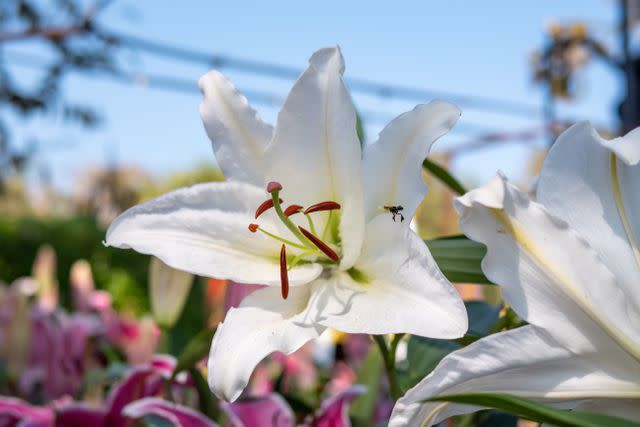
kingkidton/Getty Images
Originally cultivated on the coast of southern Japan, Easter lilies prefer mild climates, such as the Pacific Northwest, says Constance Cleveland, a gardener at the U.S. Botanic Garden. However, you can try your hand at growing Easter lilies no matter where you live, as long as you keep their needs in mind.
Light
Easter lilies prefer a sunny to partially shady location, though they don’t love full-on afternoon sun, which can scorch the blooms. They also prefer spots that allow their roots to remain cool.
If possible, choose a spot that’s exposed to full morning sun, such as an east or south-facing part of your garden, suggests Tim Pollak, assistant manager of plant production at the Chicago Botanic Garden. Planting a groundcover around them, or adding mulch, can help keep the soil cool.
Related: 34 Drought-Tolerant Plants That Will Improve Your Home's Curb Appeal
Soil
Too much water can quickly harm Easter lilies, so Pollak recommends choosing a well-draining soil— such as a sandy soil—to prevent moisture accumulation around the roots. “Typical garden soil is also okay, as long as it’s not a heavy clay,” he says. Adding organic matter to the soil can also help it drain.
Water
While Easter lilies don’t tolerate over-watering, they also don’t like to dry out. The flowers don’t alert you by wilting if they’re too dry, so try to maintain evenly moist soil. Water in small amounts frequently to avoid excess moisture. “Depending on your heat level, I would water them every three days,” says Cleveland.
Temperature and humidity
Easter lilies are considered hardy in U.S. zones 4-8. While their ideal temperature range is around 70 F, Pollak says they can withstand cooler or hotter temperatures with proper care. If it gets cooler than 55 F overnight, the flowers may suffer.
Easter lilies typically perform better in humid conditions rather than dryer climates, though they don’t like extreme humidity, so try to keep humidity levels around 30 to 50 percent.
Fertilizer
Aim to fertilize Easter lilies two to three times a growing season, beginning five or six weeks after you plant the bulbs, once the roots have been established. Pollak recommends using a balanced fertilizer, such as a 5-5-5 mix, to encourage growth.
Types of Easter Lily
The most common type of Easter lily is Lilium longiflorum “Nellie White.” Growers usually force this cultivar to bloom around spring rather than during the summer months. Other types of Easter lilies include:
White Heaven Easter Lily
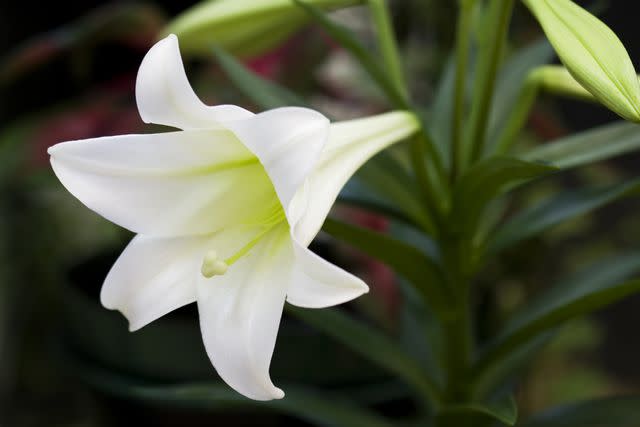
Photo: patty_c / Getty
This pure white Easter lily, also known as a Trumpet lily thanks to it's shape, is an especially fragrant flower. It also attracts pollinators like bees and butterflies!
Deliana Easter Lily
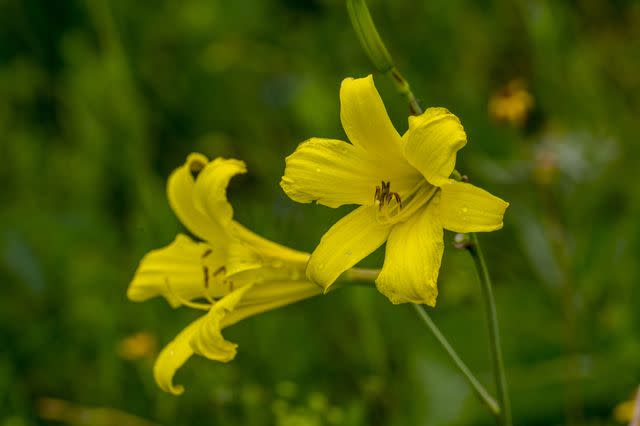
Wolfgang Kaehler / Contributor/ Getty
This yellow or green cultivar will add a little color to your garden.
Elegant Lady Easter Lily
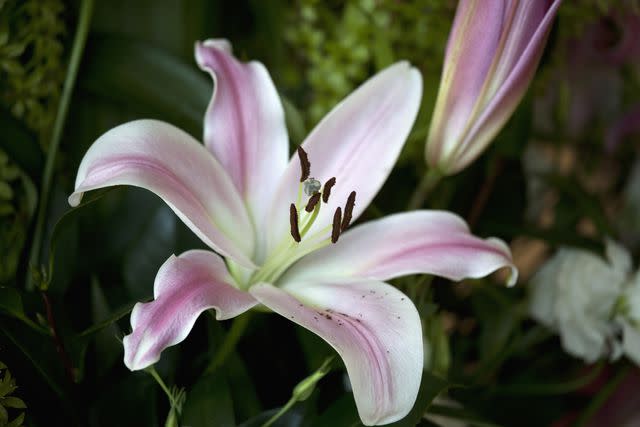
Tobias Titz / Getty Images
Easter lilyA pink variety, this lily is aptly named Elegant Lady and looks pretty in a bouquet or centerpiece.
Triumphator Easter Lily
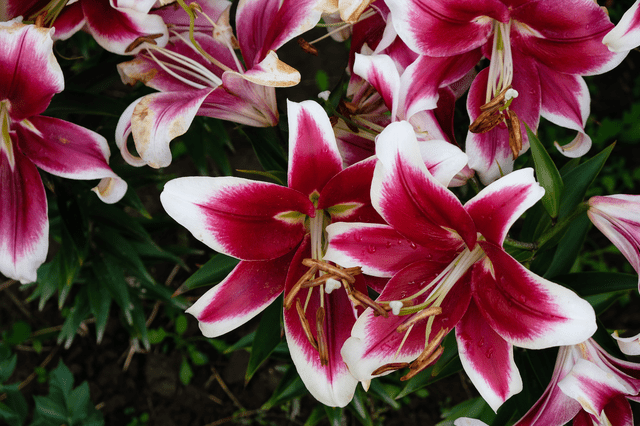
Ganna Zelinska / Getty Images
White with a pink center, this hybrid variety is showy and lush.
Pruning
Once they’ve grown, Easter lilies don’t usually need pruning because they bloom from just one, strong stem. The only exception is if the plant gets too much water or not enough. “You might get bottom leaves turning yellow with water extremes, so you can just pull those off if you see them,” Pollak says.
Propagating
Easter lilies are propagated from bulbs. Two or three years after planting them in your garden, you can divide your Easter lilies by moving the smaller bulbs surrounding the mother bulbs. “Dividing them allows the bulbs to create a root system and build strength to produce their own flowers,” says Pollak.
Related: How to Propagate Succulents From Leaves or Stems
Growing from Seeds
Easter lilies can be grown from seeds, but Pollak says it’s much more common to use bulbs. Plan to plant Easter lily bulbs either in the fall, a few weeks before the first frost date for your area, or in the early spring, when the ground is workable. Bury the bulbs about six inches deep, or about twice the depth of the bulb.
Growing in Pots
It’s possible to plant Easter lilies in pots, but they generally prefer to be grown in gardens, where their roots are more insulated from extreme weather conditions. This is especially true in colder climates, Pollak says, where the ground is more likely to provide necessary insulation when it’s freezing.
Overwintering
If you live in a cooler climate with harsh winters, such as the midwest, you’ll need to move your potted Easter lilies indoors to avoid freezing. Consider adding straw or mulch to keep the roots warm, and use a large pot so they have more insulation in the soil.
Common Pests and Diseases
Easter lilies, and all lilies, are prone to scarlet lily beetles. “If you plant them, they will come,” Cleveland says. Aphids also often infest Easter lilies. Insecticidal soaps or oils can help protect the foliage, or you can rinse pests off with a hose.
Related: 10 Common Houseplant Pests—and How to Eradicate Them
When Do Easter Lilies Bloom?
Easter lilies typically start sprouting in the spring and bloom mid-summer, according to Pollak. If you bought a forced lily and replanted it, they need time to re-calibrate and may not bloom until the following summer.
Frequently Asked Questions
Are Easter lilies pet-friendly?
Keep pets away from your Easter lily plants indoors and outdoors. Easter lilies are known to cause kidney damage in cats, according to Pollak. They aren't known to harm dogs, but they can cause intestinal discomfort if consumed.
How do I care for an indoor Easter lily?
Keep your Easter lily in a sunny window where it gets morning sun. Avoid over-watering it to prevent root rot and fungus gnats. Wait to water until the soil feels fully dry.
How long do Easter lilies last?
Store-bought, potted Easter lilies can last a few weeks with proper care. Once they wilt, you can transplant them outdoors to your garden or a pot, but they likely won’t bloom until the next year.
What does the Easter lily symbolize?
"The Easter lily symbolizes purity, renewal, and hope, often associated with the arrival of spring and the rejuvenation of nature," says Bronwen Smith at B Floral Event Design and Production. "Its white petals represent freshness and new beginnings, reflecting the spirit of the Easter season."
Are Easter lilies hard to keep alive?
"Easter lilies require specific care to thrive indoors, including well-drained soil, indirect sunlight, and consistent watering," explains Smith. "While they can be sensitive to overwatering and certain environmental conditions, with proper care, they can be kept alive for several weeks or even longer."
What color are Easter lillies?
"Easter lilies are typically white, symbolizing purity and the arrival of spring. However, hybrid varieties may feature shades of pink, yellow, or orange, offering a wider range of color options for floral arrangements during the Easter season," says Smith.
For more Real Simple news, make sure to sign up for our newsletter!
Read the original article on Real Simple.

